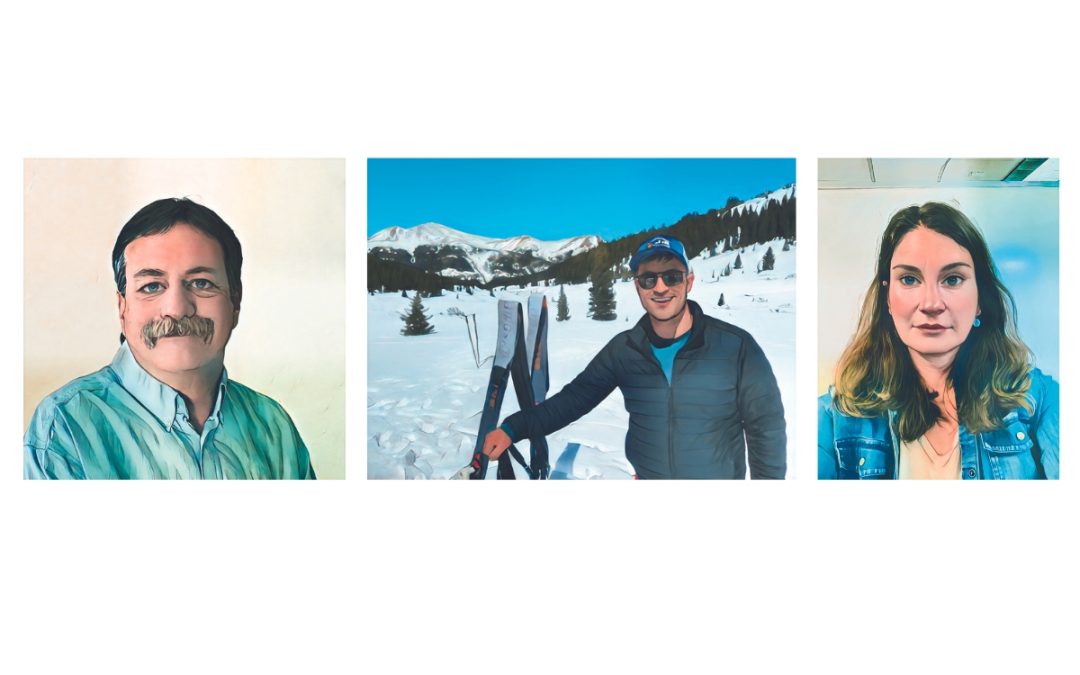How three water managers are using snowpack data to make smarter decisions
Determining Flows at Navajo Dam

Courtesy of Susan Behery
“I’m not someone who thrives on adrenaline,” admits Susan Behery, a hydraulic engineer with the U.S. Bureau of Reclamation. Yet as operator of Navajo Dam, located on the San Juan River in northern New Mexico, Behery must place high-stakes bets on water that would test any gambler’s nerve.
Every spring, she decides when and how much water to release from Navajo Reservoir to accommodate winter snowmelt and summer monsoons. Sending too much water through the dam could result in flooding downstream. Yet endangered aquatic species below Navajo Dam require specific flow benchmarks that vary from 2,500 cubic feet per second (cfs) to 10,000 cfs. Meanwhile, Behery must meet delivery obligations to the Navajo Nation and Jicarilla Apache Nation. And she can’t execute quick strategy changes: Behery must provide two weeks’ notice of discharge fluctuations in order to give water users time to prepare for the expected flows.
Her basin is particularly affected by dust deposition, so Behery works closely with the Center for Snow and Avalanche Studies to predict how dust will impact runoff timing into Navajo Reservoir and the Animas River, a tributary of the San Juan. Only by timing peak releases through Navajo Dam with peak flows on the Animas can Behery hit the flow targets required by endangered species’ recovery programs. In 2019, Behery used insights into dust-accelerated timing to meet all her flow targets for endangered species and achieved a major win for their recovery programs.
Behery is also following developments in soil moisture monitoring. “Everything runs off earlier with dust, and the sooner the snow goes away, the drier the soil becomes,” she notes.
Wetting Colorado’s Biggest City
“Forecasting is a tough game,” chuckles Taylor Winchell, a climate adaptation specialist for Denver Water. Denver Water makes use of a comprehensive network of SNOTEL sites that provide a continuous stream of data on each location’s snow water equivalent (SWE). The utility’s staff consult these daily to track snowpack and estimate how runoff will feed the watersheds and reservoirs that supply their 1.5 million customers.
Once the snow around those SNOTEL stations melts, Denver Water staff have few ways to know how much water remains on the state’s highest summits. But in 2019, the utility started using Airborne Snow Observatories (ASO) across the Blue River watershed. One flight assessed peak snowpack, while a later flight calculated what remained after the SNOTEL sites had gone dry. That second flight indicated that there was more snow remaining at high elevations than was suspected. So Denver Water increased outflows from Dillon Reservoir to make room for extra water, avoiding downstream flooding.
“Having this information about the volume of water in the snowpack is invaluable in decision making,” he says. “It tells us how we can better manage our water resources in any given year.”
Still on his wish list is a reliable forecast for future seasonal precipitation. For now, Winchell repeats, “Predicting the future is never easy.”
Doing Right by the Law

Courtesy of Craig Cotten
The Rio Grande originates in Colorado’s San Juan Mountains but flows for 200 miles through New Mexico and Texas to the Gulf of Mexico. To ensure fair distribution of its water, the three states signed the Rio Grande Compact of 1938. Today, Craig Cotten makes sure that Colorado complies. As division engineer for Colorado’s Rio Grande Basin, Cotten determines how much water to send to New Mexico. “Our obligation is based upon the estimates of the amount of water we think we’ll have through the system,” Cotten says. That amount is largely determined by runoff.
Cotten consults three different forecasts to project how melting snow may affect flows. “Ideally, all three forecasts would be similar,” but they aren’t always, says Cotten. In such years, he relies on anecdotes from snowmobilers and others to decide which forecast to trust. If the forecast underrepresents the available water, Cotten may owe more water than expected because the compact obligation increases with flows. That would force him to curtail delivery to irrigators. Irrigators also complain about over-delivery to New Mexico. Says Cotten, “That water comes out of their ditch, and they could have used it if I hadn’t sent it away.”
Sophisticated data helps him hit targets. Last year, Colorado owed 300,000 acre-feet of Rio Grande water to New Mexico, and the actual delivery came within 200 acre-feet of the target. “Usually, we aim for within 10,000 acre-feet,” Cotten says. His staff used data to adjust irrigators’ curtailments daily. That let them hit the bullseye, which Cotten says is “pretty amazing. It’s as close as we’ve ever gotten.”



 Print
Print